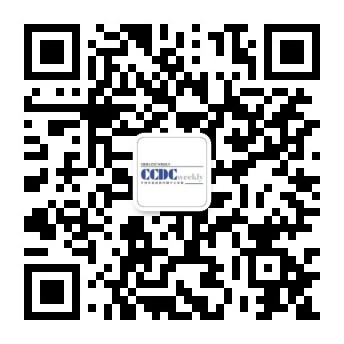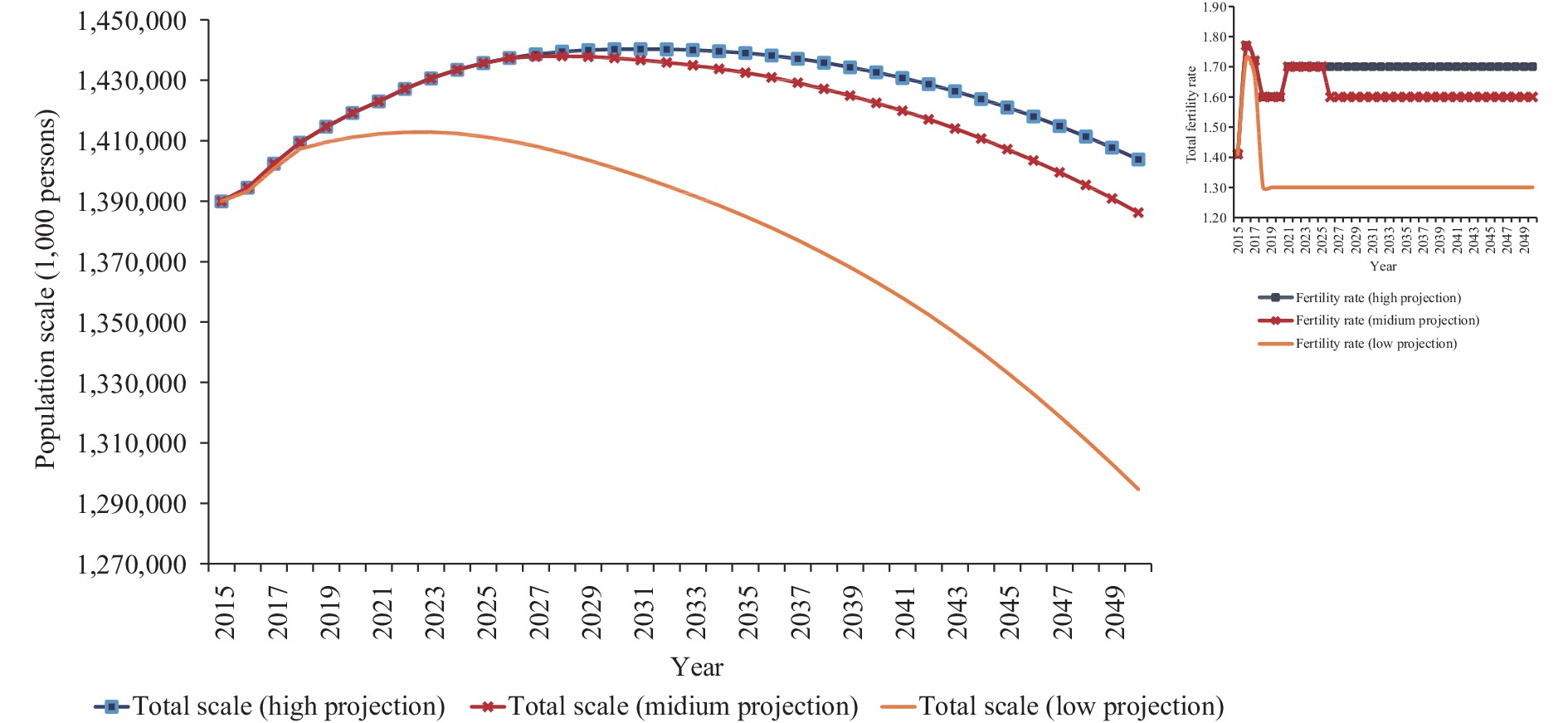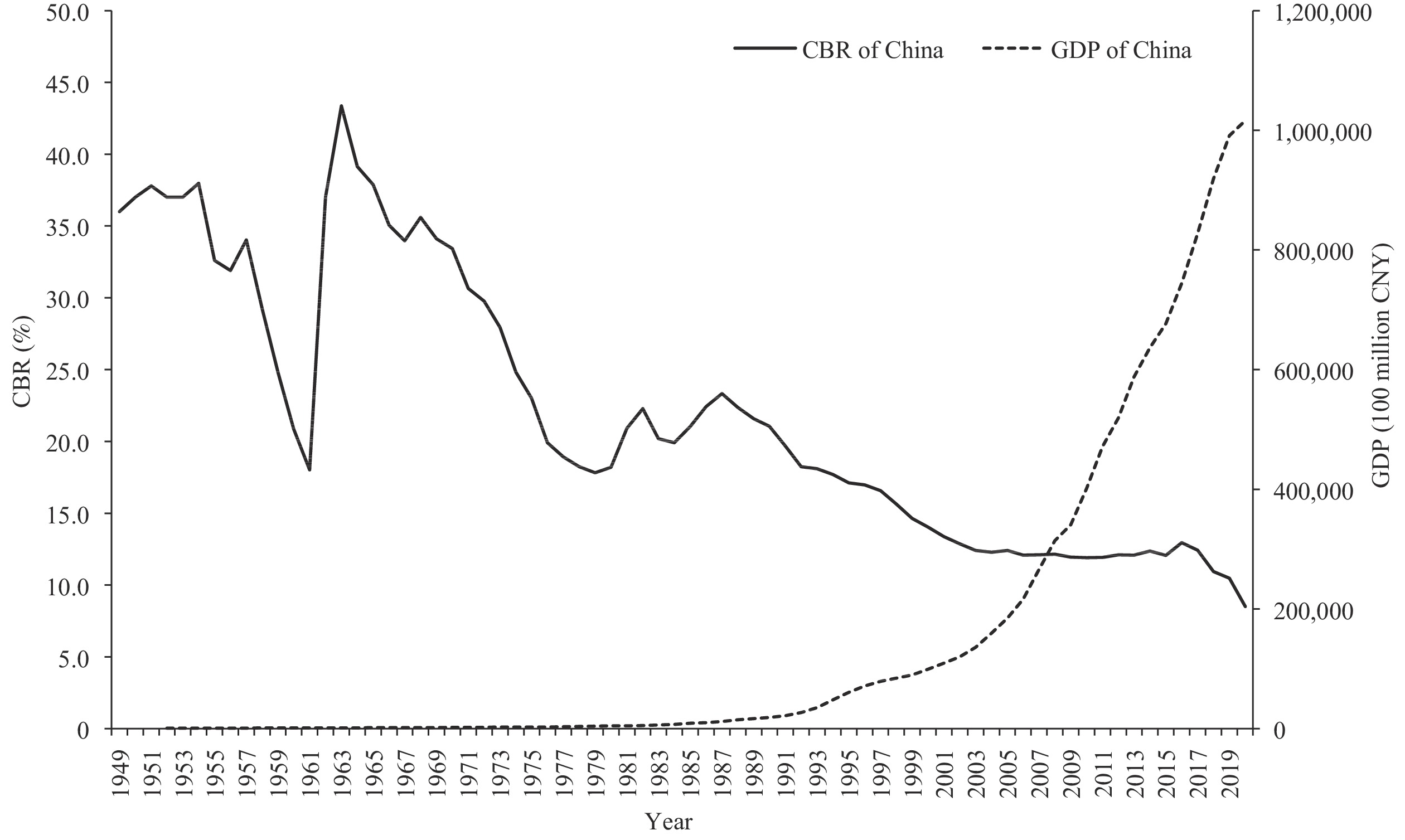2021 Vol. 3, No. 28
What is already known about this topic?
As the largest country in the world, China experienced a demographic transition at a historic scale during the past 50 years with extraordinarily associated changes in the age structure of the population, declining fertility rates, accelerating process of population aging, and growing population scale.
What is added by this report?
This study presented future trends of five important population indicators in China. From 2015–2050, China experienced outstanding demographic changes — increases in life expectancy and declines in fertility rate — that have led to population aging. In addition, disability prevalence is growing, and life expectancy with disability is also increasing.
What are the implications for public health practice?
This study provided evidence of healthy life expectancy improvement and disease burden declining, healthy aging, and active aging. Due to the uncertainties of future trends of population structure changes, dynamic evaluations, timely adjustments, and innovations in population health strategy design and management should be strengthened to ensure quality of life under the background of population aging.
Diverse social factors such as economic development, policy, culture, and special historical events could affect population fertility directly. At present, the influence of social factors on fertility is still controversial. With the diversification of population characteristics, the cross-group robustness of the classical theories and research conclusions are broken.
This research explores the population fertility trajectory of China and its association with economy and education. Although the social fertility shows an opposite trend with the Gross Domestic Product, the economy plays a role in improving the fertility rate. The schooling years per capita inhibits the increase of fertility rate, whereas the proportion of higher education population helps to increase the fertility rate.
Facing the continuous low fertility rate in the post-demographic transition period in China, promoting economic development and advancing the popularization of higher education would be important paths to create supportive and friendly social and family environments for female fertility, so as to enhance female fertility willingness and level.
The world’s population continues to grow, albeit at a slower pace. The decelerating growth is mainly attributable to fertility declines in a growing number of countries. However, there are substantial variations in the future trends of populations across regions and countries, with sub-Saharan African countries being projected to have most of the increase. Population momentum plays an important role in determining the future population growth in many countries and areas where fertility is in a rapid transition. With declines in fertility, the world’s population is unprecedentedly aging, and the numbers of households with smaller sizes are growing. International migration is also on the rise since the beginning of this century. The world’s population is also urbanizing due to increased internal rural to urban migration. Nevertheless, there are uncertainties in future population growth, not only because there are uncertainties in the future trends in fertility, mortality, and migration, but also because there are many other factors that could affect these trajectories. International consensus on climate change and ecosystem protections may trigger population control policies, and the ongoing pandemic is likely to have some impact on mortality, migration, or even fertility.



 Subscribe for E-mail Alerts
Subscribe for E-mail Alerts CCDC Weekly RSS Feed
CCDC Weekly RSS Feed

